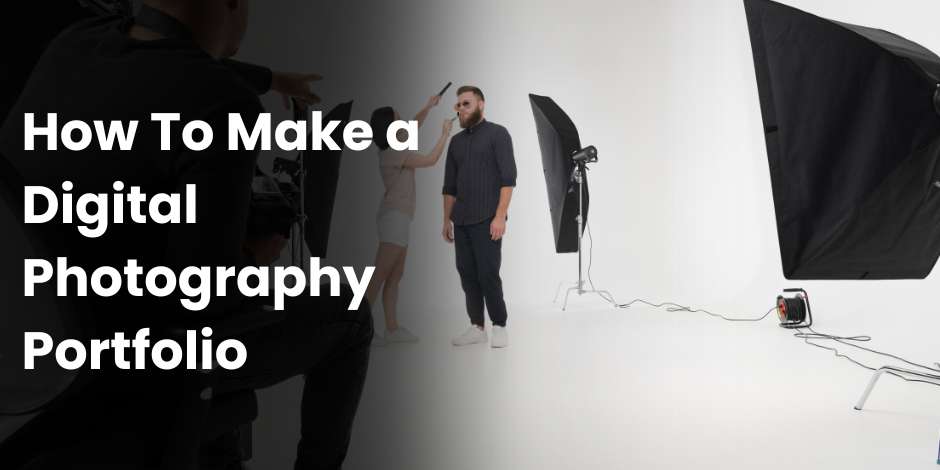In the digital age, your online presence is your business card. For photographers and content creators, a well-crafted digital photography portfolio is essential in showcasing their work and attracting potential clients. Whether you’re a seasoned professional or an aspiring photographer, having a robust portfolio can distinguish you from the competition and provide a visual narrative of your skills and creativity.
In this guide, we’ll walk you through the essential steps in creating a stunning digital photography portfolio. From selecting your best works to choosing the right platform, we’ve got you covered.
Why You Need a Digital Photography Portfolio
Showcasing Your Work
A digital portfolio allows you to present your work in the best possible light. High-quality images, neatly categorized and beautifully displayed, give potential clients a clear idea of what you can do.
Building Credibility
A professional portfolio helps to establish your credibility. It shows that you are serious about your craft and provides social proof of your abilities.
SEO and Online Presence
A well-optimized portfolio can enhance your online visibility. By incorporating SEO best practices, you can attract more organic traffic and increase your chances of being discovered by prospective clients.
Steps to Create a Digital Photography Portfolio
1. Curate Your Best Work
The first step in creating a stunning portfolio is to curate your best work. This means selecting images that not only represent your style but also highlight your versatility and technical prowess.
Tips for Curating:
- Quality Over Quantity: It’s better to have fewer high-quality images than a plethora of mediocre ones.
- Diversity: Include a variety of shots to show your range. For example, if you specialize in portrait photography, include headshots, candid shots, and creative portraits.
- Consistency: Ensure that your images have a consistent style and quality. This helps in establishing a strong personal brand.
2. Choose the Right Platform
Choosing the right platform for your portfolio is crucial. There are numerous options available, each with its own strengths and weaknesses.
Popular Platforms:
- Squarespace: Known for its beautiful templates, Squarespace is ideal for photographers who want a visually stunning portfolio without needing technical skills.
- Wix: Offers extensive customization options and a user-friendly drag-and-drop interface.
- Adobe Portfolio: Integrates seamlessly with Adobe Creative Cloud, making it a great choice for those already using Adobe software.
- WordPress: Offers extensive customization and flexibility but may require some technical know-how.
3. Design Your Portfolio
The design of your portfolio should reflect your personal brand and make it easy for visitors to navigate.
Design Tips:
- Clean and Simple: Avoid clutter. A clean, simple design ensures that your work stands out.
- Responsive Design: Ensure your portfolio looks good on all devices, including smartphones and tablets.
- High-Quality Images: Use high-resolution images to ensure your work is presented in the best possible quality.
- Easy Navigation: Organize your portfolio in a way that makes it easy for visitors to find what they are looking for. Use categories or galleries to separate different types of work.
4. Write Compelling Descriptions
Alongside your images, include descriptions that provide context and share the story behind each photograph. This can include the techniques used, the inspiration behind the shot, or any interesting anecdotes.
Writing Tips:
- Be Concise: Keep your descriptions short and to the point.
- Be Authentic: Write in a way that reflects your personality and style.
- Use Keywords: Incorporate relevant keywords to improve your SEO but avoid keyword stuffing.
5. Optimize for SEO
Search engine optimization (SEO) is crucial for increasing the visibility of your portfolio. By optimizing your site, you can attract more organic traffic and potential clients.
SEO Tips:
- Keywords: Use relevant keywords in your titles, descriptions, and image alt text.
- Meta Descriptions: Write compelling meta descriptions that include your main keywords.
- Backlinks: Get backlinks from other reputable websites to improve your site’s authority.
- Load Speed: Ensure your site loads quickly by optimizing images and using a reliable hosting service.
6. Include a Call to Action (CTA)
A call to action encourages visitors to take the next step, whether it’s contacting you for a project, following you on social media, or signing up for your newsletter.
CTA Tips:
- Be Clear: Clearly state what you want the visitor to do.
- Be Persuasive: Use persuasive language to encourage action.
- Be Visible: Place your CTA in a prominent position on your site.
7. Keep It Updated
Your portfolio should be a living document that evolves as your work and skills develop. Regularly update it with new work and remove any outdated or less impressive pieces.
Frequently Asked Questions (FAQs)
1. How many photos should I include in my portfolio?
It’s generally recommended to include 20-30 of your best images. The focus should be on quality over quantity.
2. Can I use a free platform for my portfolio?
Yes, there are several free platforms available, such as Wix and Adobe Portfolio. However, paid options often provide more customization and professional features.
3. Should I include client testimonials in my portfolio?
Absolutely. Client testimonials can build credibility and provide social proof of your skills and professionalism.
4. How often should I update my portfolio?
It’s a good idea to review and update your portfolio every few months or whenever you complete a significant new project.
5. Can I include personal projects in my portfolio?
Yes, personal projects can showcase your creativity and passion, especially if they highlight skills or styles not evident in your professional work.
Conclusion
Creating a digital photography portfolio is a crucial step for photographers and content creators looking to showcase their work, attract clients, and build credibility. By curating your best work, choosing the right platform, designing a user-friendly site, writing compelling descriptions, optimizing for SEO, including a clear call to action, and keeping your portfolio updated, you can create a stunning portfolio that reflects your unique style and skills.
Remember, your portfolio is often the first impression potential clients will have of your work, so take the time to make it exceptional. Happy shooting!














